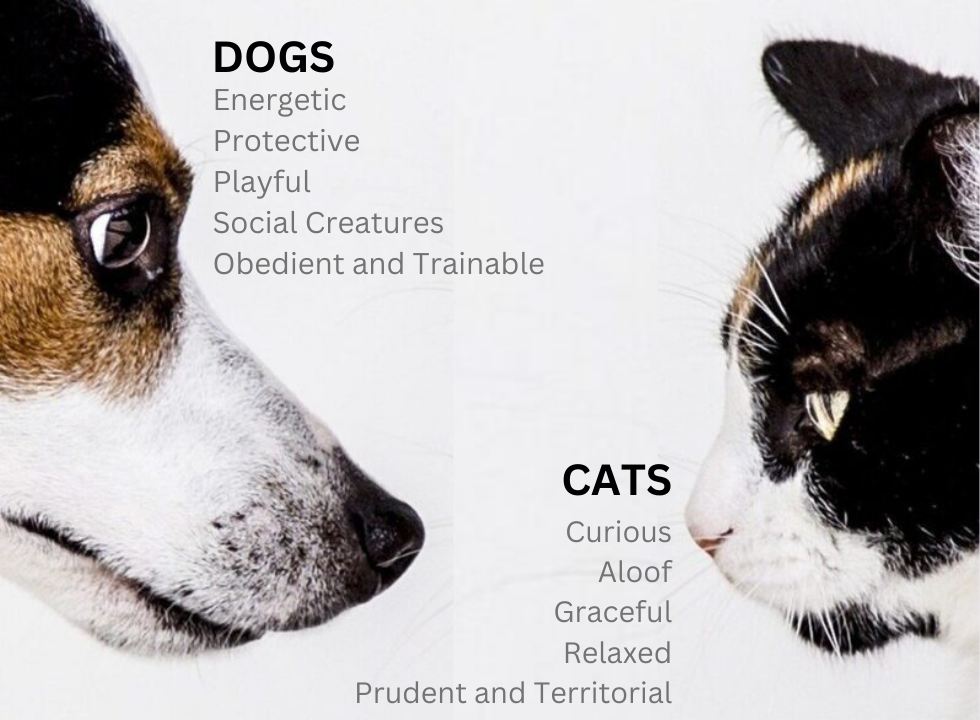
From cartoons to real-life experiences, the idea of cat-dog rivalry has been continuing for generations. But, it is only an old-age stereotype based on half-baked truth.
If you wonder the same, you came to the right place! Let us tell you if cats and dogs could get along.
Cats and dogs get along well and even make close friends when raised in a controlled environment or socialized in conditions promoting non-aggressive behaviors.
When brought together for the first time, your cats and dog will react negatively to each other, but after continuous socialization and familiarization, they will make the best of friends.
In this article, we delve into the dynamics of cat-dog relationships, examining the challenges and approaches to bring them together.
The Instinctual Differences
To begin understanding the dynamics between cats and dogs, you should first recognize their inherent differences in behavior and communication.
Felines are naturally more independent, territorial, and moody, whereas canines are social, pack-oriented, and exuberant animals.
It goes back to the earliest history of feline and canines, where cats are desert animals that live and hunt by themselves.
Cats began forming unique relationships with humans around 10,000 years ago when humans first started settling down.
They primarily lived off human settlements for easy prey like mice, roaches, and free food.
However, dogs that came from wolves lived and hunted in packs and were domesticated as pets a few thousand years before the cats.
Therefore, a cat is likely to avoid any other animal around its presence and enjoy a solitary life unless it is socialized to get along.
How to Bring Cats and Dogs to Get Along
Do not lose hope because cats and dogs can get along quickly.
Trying to bring two different animals under the same roof can be challenging at first, but it gets easier with a proper socialization process.
Here are a few proven socialization tips for you in a step-by-step guide.
Step 1: Prepare the Environment
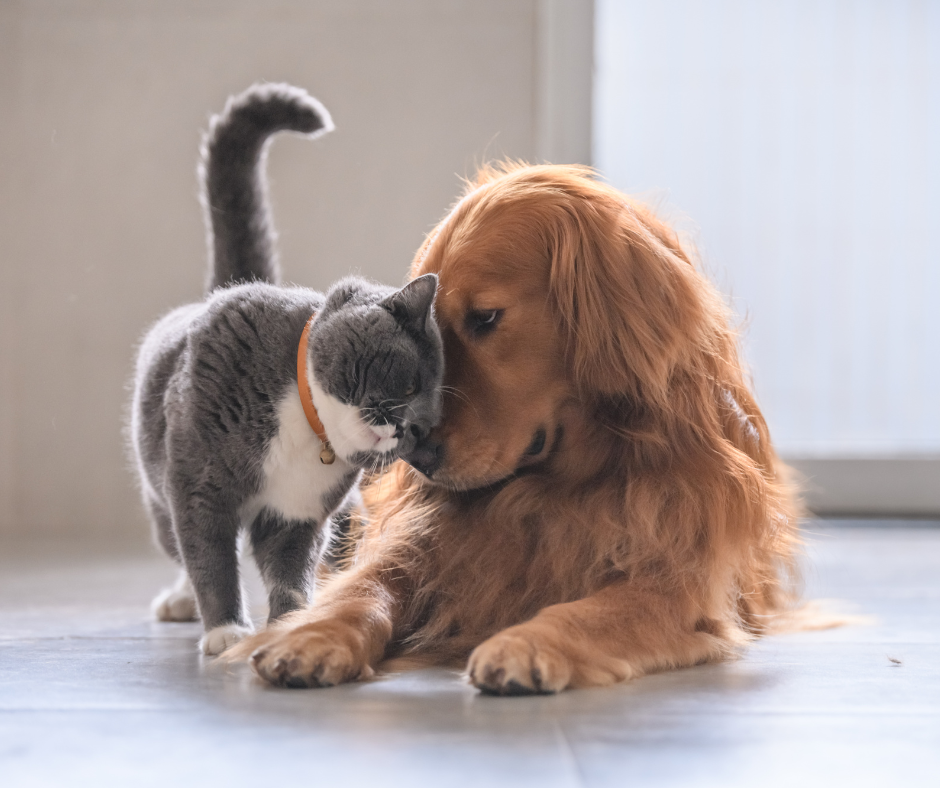
Before introducing your cat and dog, create a safe and neutral environment.
It can be a separate room with all the necessary supplies for each pet, including food, water, a litter box for the cat, and bedding.
If you already have a cat or dog at home, you must find a new space for the new arrival and provide necessary daily items until they are ready to be brought along.
Step 2: Familiarize Scents
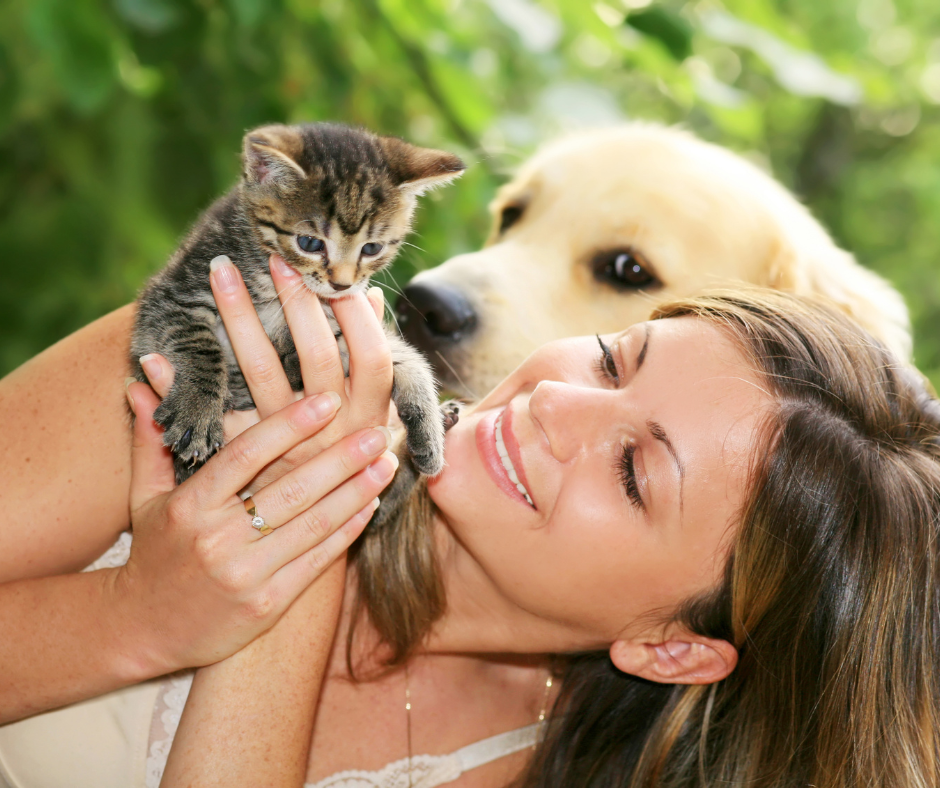
An old but proven technique to familiarize two different animals is swapping their items to help them become accustomed to each other's scents.
This should be done before bringing the two animals close to desensitize each other.
You can swap their blankets or beddings, toys, and clothing item, by placing them randomly in each other’s room.
A cat may take a few weeks to get used to a new scent; hence, the earliest you do it, the better.
Step 3: Controlled Introduction and Early Interactions
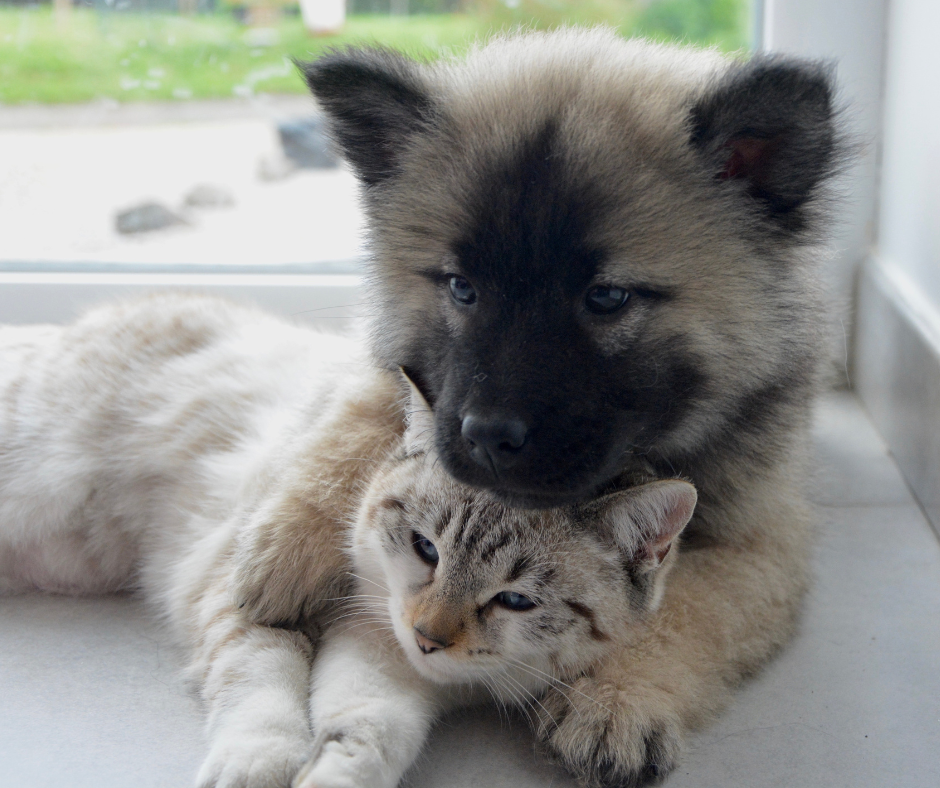
After a few days or weeks of scent familiarization, choose a time to introduce both pets.
Remember, they should be calm and relaxed, not under mental or physical duress.
- Have one person hold the dog on a leash, and another person bring the cat into the room.
- Alternatively, allow the dog or cat to see the other animal briefly through the gate or door, then get them to focus on something else.
- Praise and reward the animal for being able to focus elsewhere.
- Keep them at a distance and allow exploring the environment on their terms.
- If you are alone, keep the dog on a leash and tied to a fixed spot, so you can move away to relocate the cat.
- Please continue to give them short viewings of each other throughout the day.
- If they get too excited, close the door and begin feeding them on either side of the door.
- It allows them to associate the smell of the other with something good: food.
Step 4: Observe Body Language
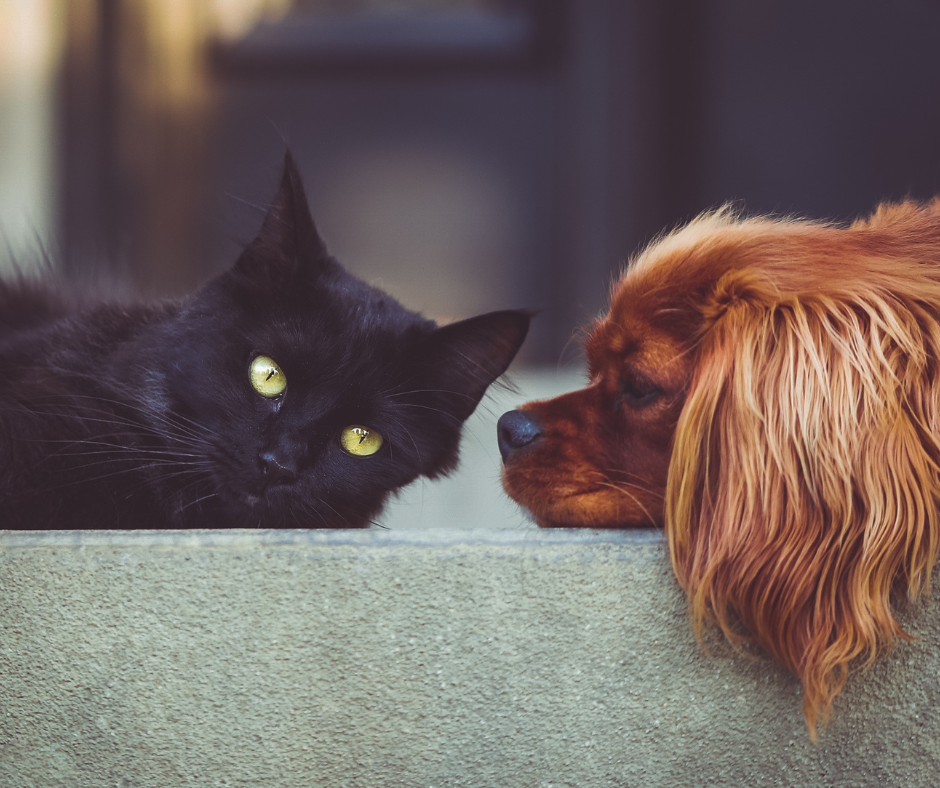
Monitor both pets' body language closely to look for signs of curiosity rather than aggression.
They will likely react aggressively to each other's presence.
If the cat hisses, arches its back, or raises its fur, it indicates a sign of fear. When the dog lunges or barks aggressively, it might be best to separate them and try again later.
It may take a few or more attempts to get them close together without them turning hostile against each other.
Step 5: Gradual Exposure
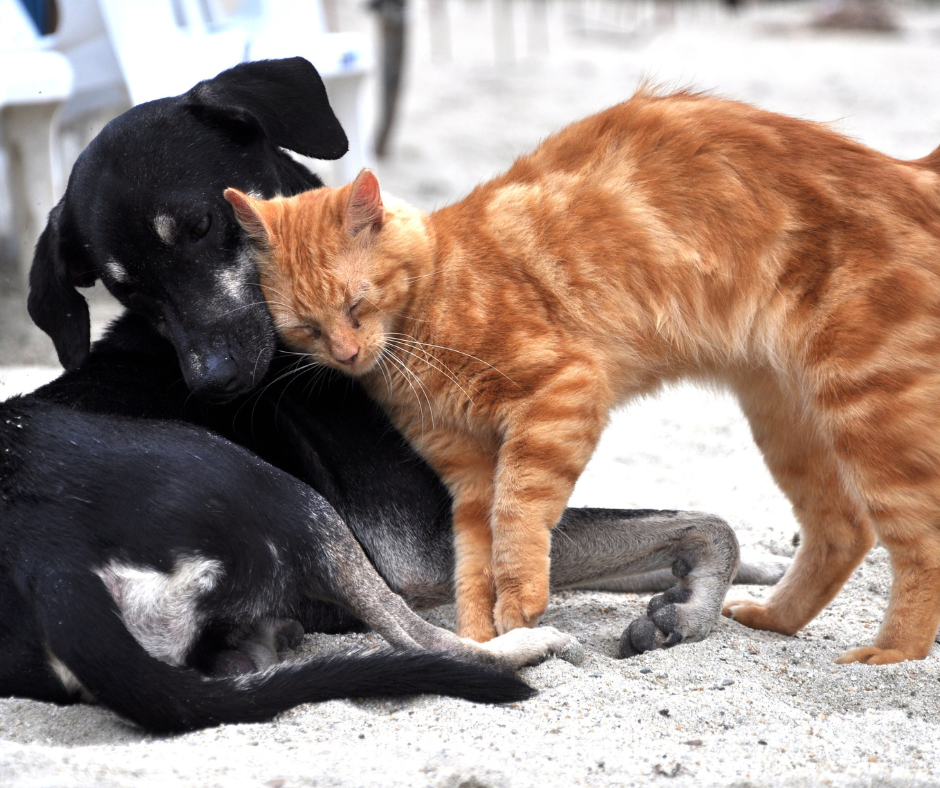
The ongoing approach is to expose them to each other gradually.
- Increase the duration of their interactions over multiple sessions for a few days or weeks.
- Keep the dog on a leash to maintain control and gradually allow them to come close or approach each other.
- Be careful, as a scared cat can scratch the dog, or the dog may try mauling the cat.
- Once their aggression subsides, you can take the dog off lease and let them approach each other.
- To encourage their positive behavior, offer treats after each interaction. Treats, verbal praise, and gentle petting can help create positive associations with each other's presence.
Step 6: Positive Reinforcement
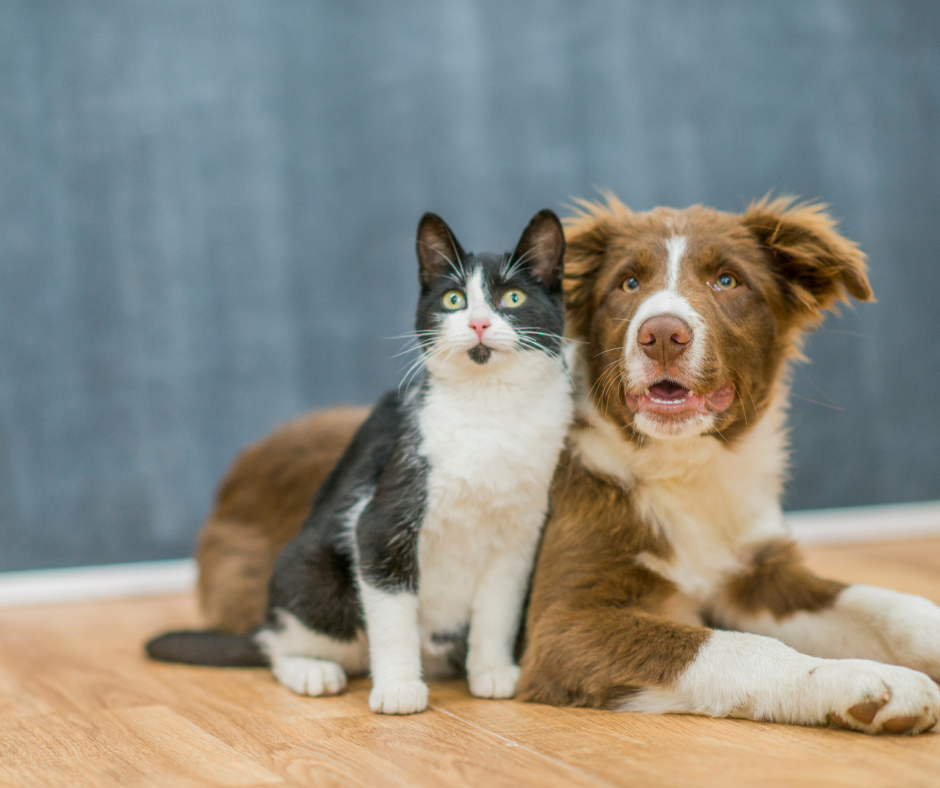
Keep using positive reinforcement techniques to reward their behaviors.
If either pet displays negative behavior, reinforcing that behavior by scolding them will worsen the situation.
Instead, practice positive reinforcement techniques to reward their behavior and motivate them further.
Most dogs are highly food-motivated, making it easy to provide them with food treats as praise. You can also alternate it with petting or their favorite toy or game to reward each progress.
Consider rewarding cats with delicious treats, catnip, petting, or interactive play after each session.
Step 7: Controlled Encounters
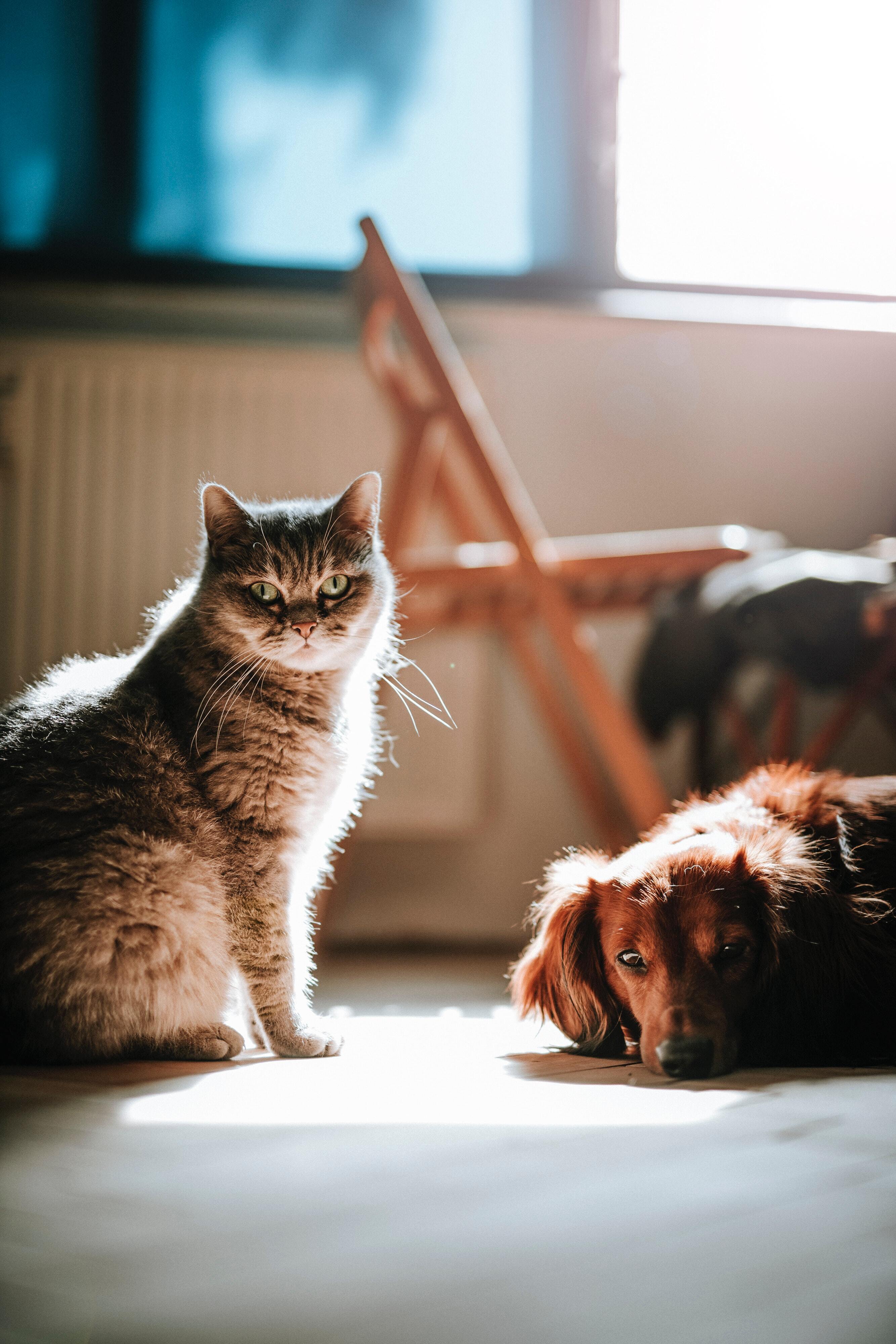
As they become more comfortable, allow short, controlled face-to-face interactions without restraining either pet.
Supervise closely and intervene if any signs of aggression or discomfort arise.
Return to Step 5 and continue with gradual exposure and reinforcement techniques until their aggression subsides.
Step 8: Separate Spaces
Even if they have familiarized themselves with each other’s presence and enjoy spending time together, keeping their food and resting place separate is best.
This includes separate resting areas, litter boxes, and feeding stations.
Having their own spaces helps prevent unnecessary competition, usually fighting for resources.
Step 9: Shared Activities
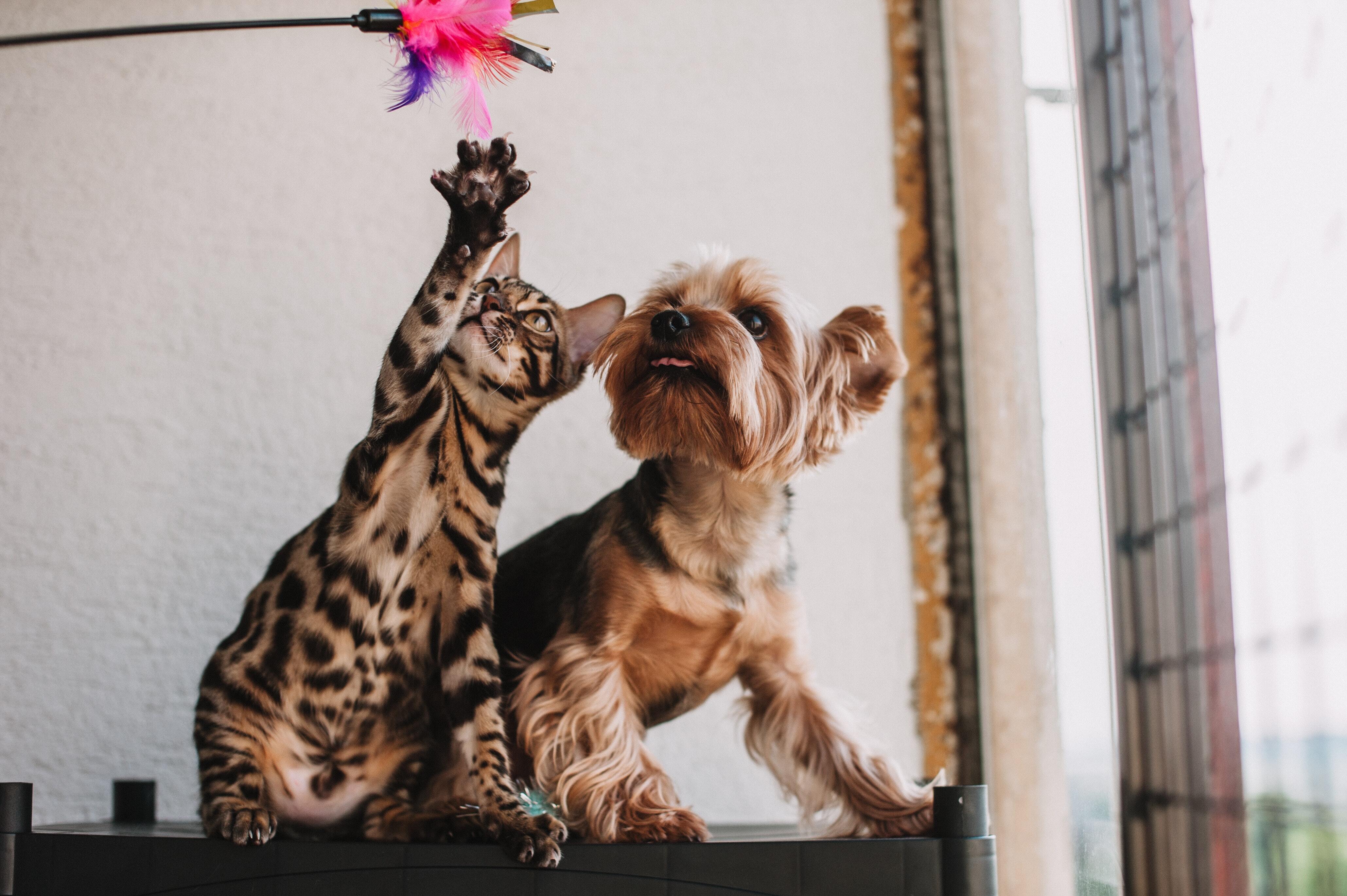
Engage both pets in shared activities that they both enjoy, such as interactive play sessions with toys.
This can help them associate positive experiences with each other's presence.
It will help them socialize and feel comfortable in each other’s company, which helps strengthen the bond.
Challenges to Overcome
As previously mentioned, getting dogs and cats in the same boat is not easy.
Many hurdles may arise before, during, or even after bonding.
You can quickly overcome most of these challenges, while others may require some work and professional assistance.
Here are the challenges each pet owner will experience.
1. Fear and Aggression
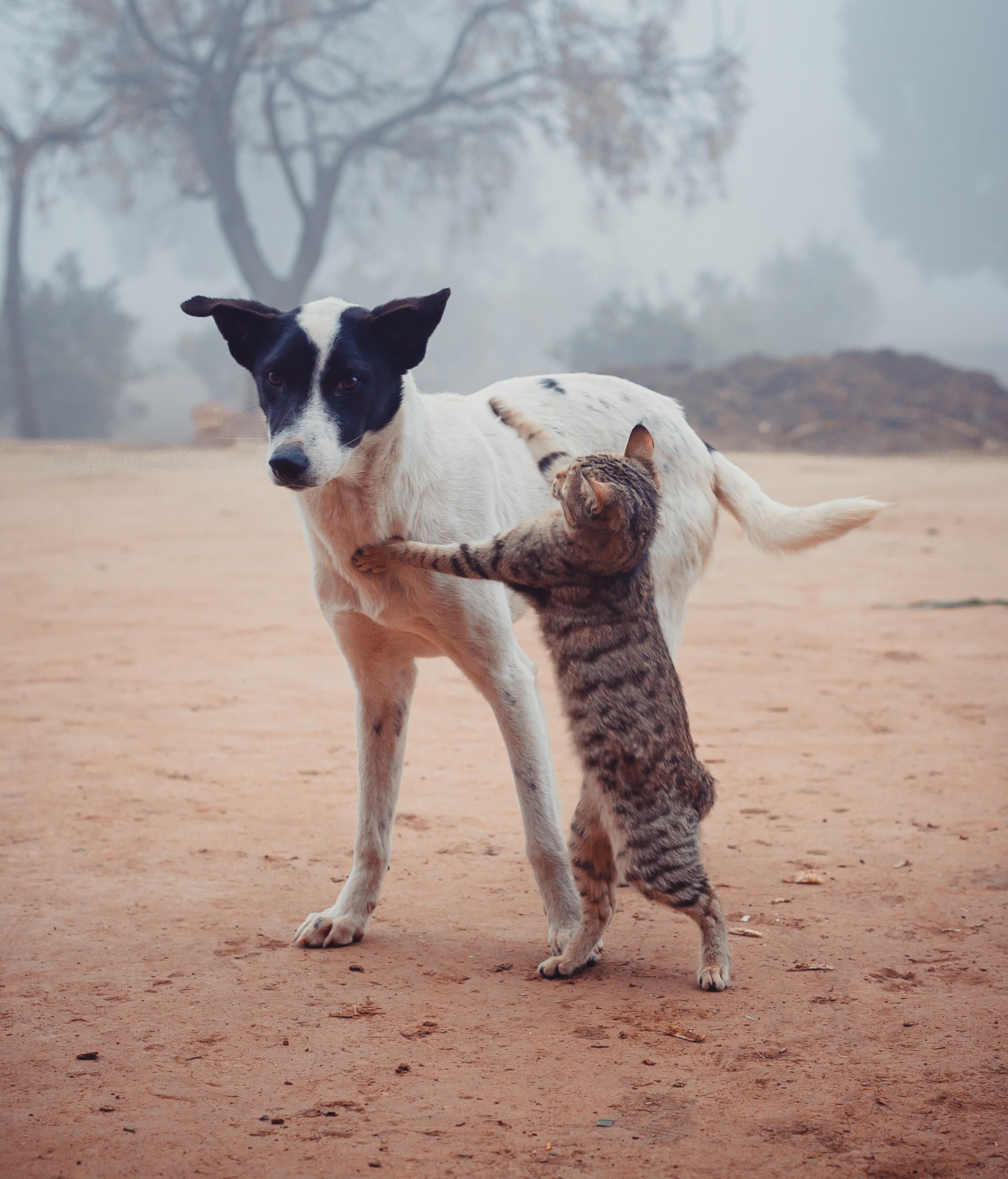
Fear and aggression are common factors that might prevent two animals from approaching each other.
Cats might hiss, arch their backs, or hide, while dogs might bark, lunge, or become overly excited.
Seeing these reactions when introducing cats and dogs is common, but it should subside after a few days or a week.
This fear can escalate to aggression if not appropriately managed. Continue with the gradual interaction approach.
2. Territory Issues
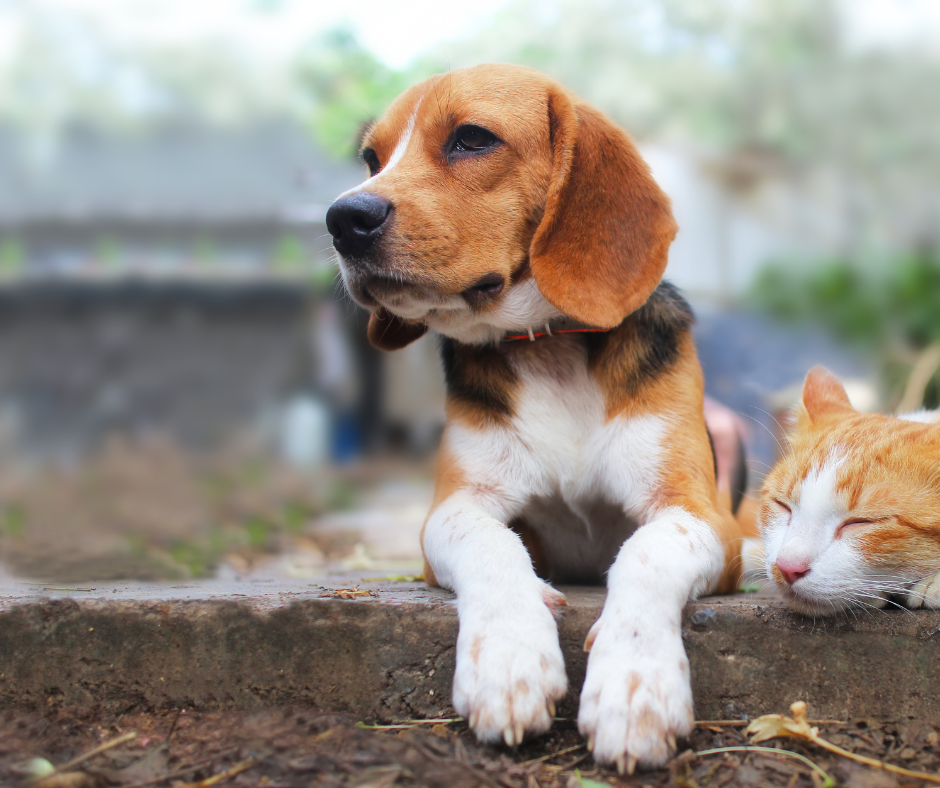
Cats are territorial animals, and a new pet in their space can be stressful.
They are more likely to be aggressive towards the dog because dogs may not understand or respect these boundaries, leading to tension and aggression.
Keeping specified or separate spaces for each animal is a must.
3. Size Disparities
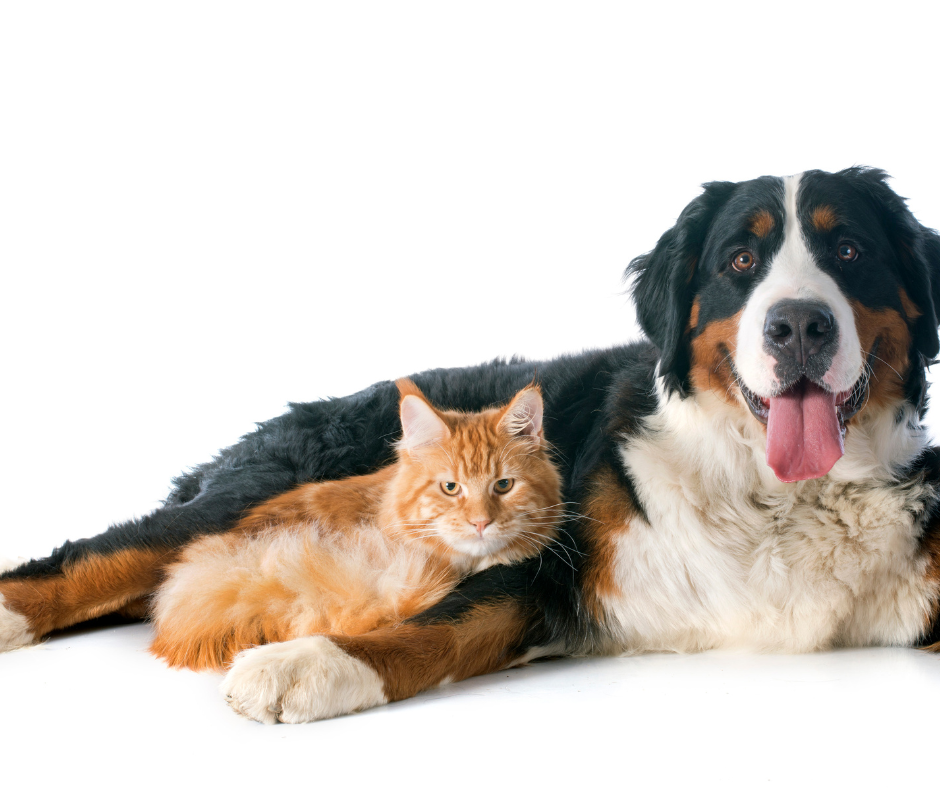
If your dog is significantly larger than your cat, the size difference can create a power imbalance that the cat finds threatening.
They might feel cornered or unsafe around the giant dog.
Consider the size of the dog before deciding to get one.
5. Stress and Anxiety
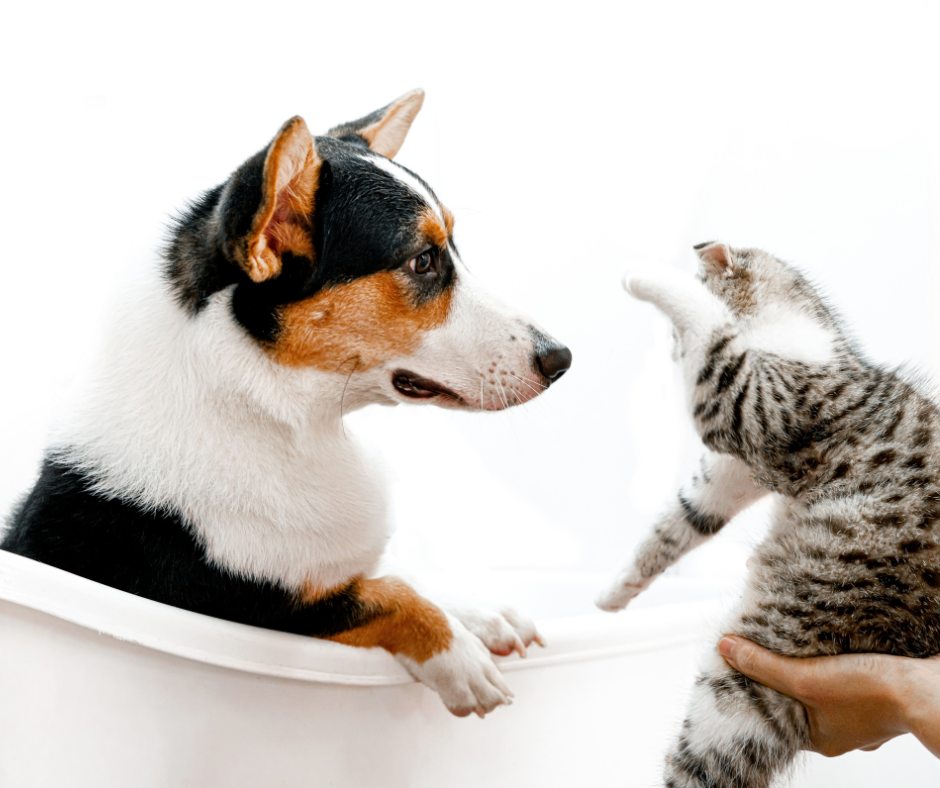
The process of introducing pets can be stressful for both cats and dogs.
Expect behavior changes, including hiding, excessive grooming, loss of appetite, and even health issues.
However, it should subside after a few days or a week.
6. Uneven Progress
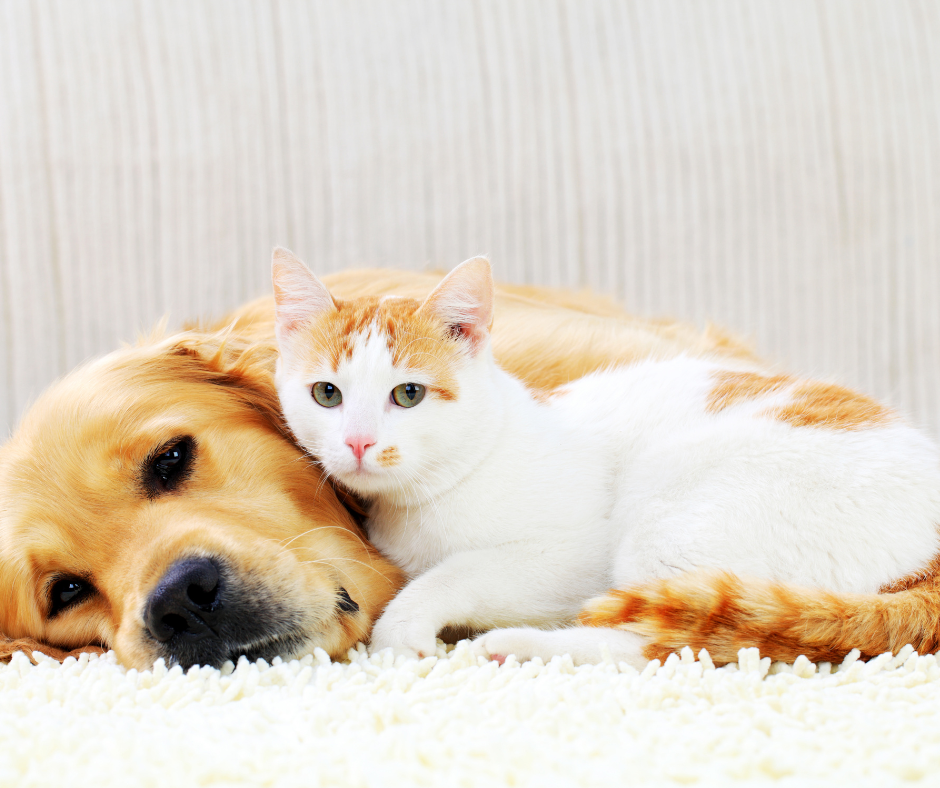
Every animal progresses at their own pace. Similarly, the cat-dog relationship moves at its own pace.
One pet might be more accepting and eager to form a bond, while the other might need more time.
It is Ok until you continue with gradual interaction to allow both pets to accept each other.
7. Previous Experiences
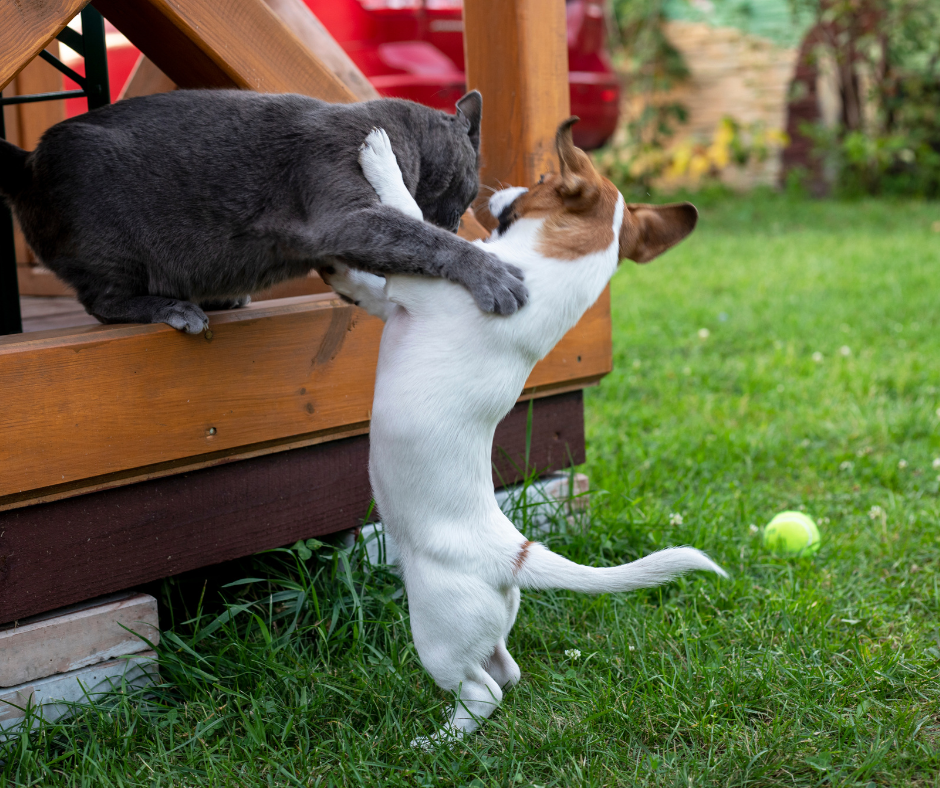
Both cats and dogs can carry previous negative experiences with other animals, influencing their behavior in new relationships.
Traumatic experiences can affect their ability to trust and interact positively.
In such a case, you should consult a professional to help deal with the anxiety from past experiences.
8. Unmet Expectations
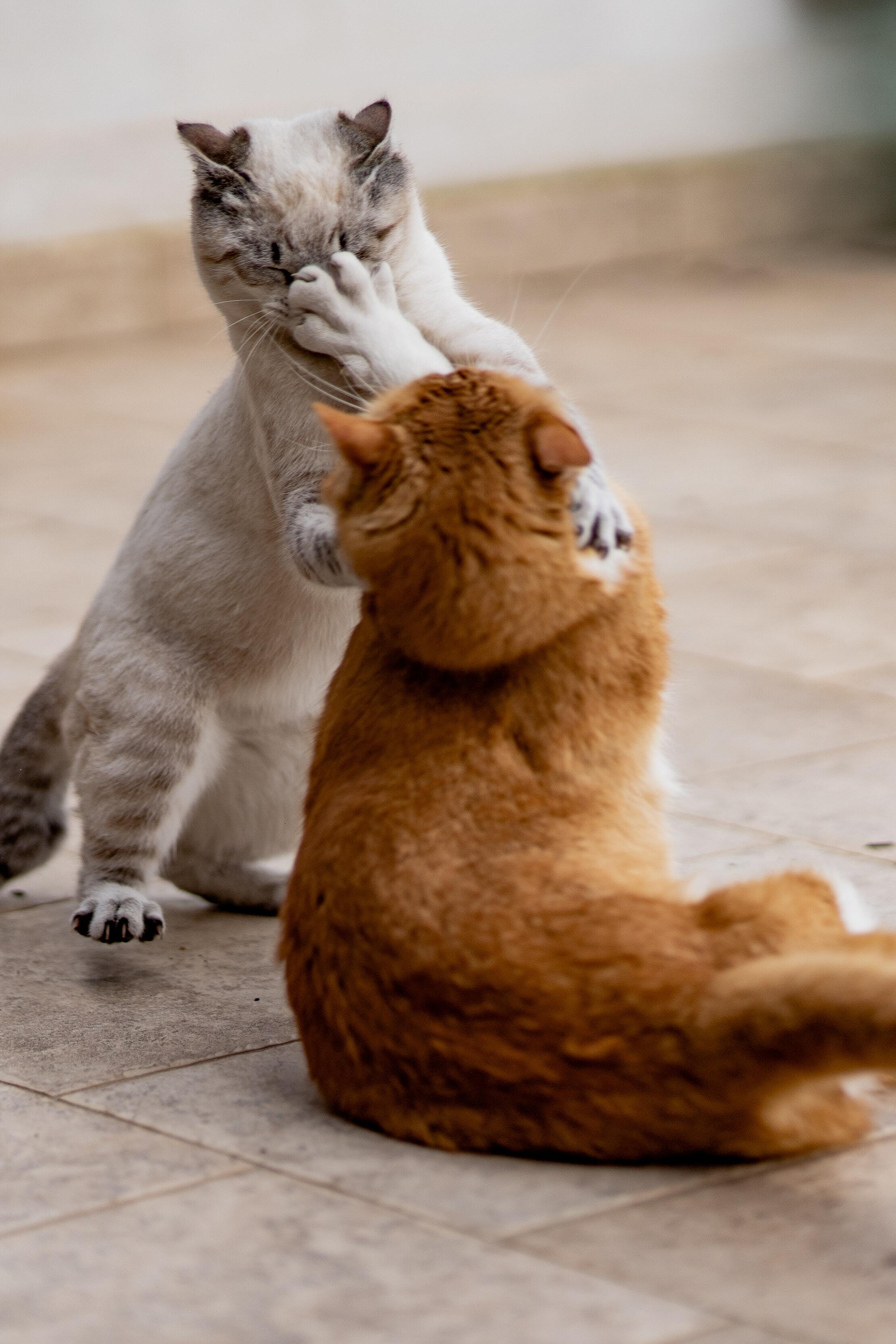
It may be essential to have realistic expectations from their newly formed relationship.
Not all cat and dog relationships are harmonious; some end up fighting or troubling each other later.
It is crucial to practice positive reinforcement to encourage them to be more accepting of each other.
Heartwarming Success Stories
There are many real-life examples of cats and dogs finding a soul mate in each other.
Here is one such video where the cats and a dog have created a strong bond of friendship and trust.
https://youtu.be/Q8ndwyVIVdA
You could see that kittens feel welcomed and loved by the Golden Retriever.
Similarly, the Golden Retriever is open to cuddles and incessant playtime with the kittens.
In another video, a German shepherd pup is equally delighted to see a new mom cat with her newborn kittens.
You can see that the cat feels not at all threatened by the dog's presence towards her kittens.
https://youtu.be/Mx_7uZhKL84
Conclusion
Not all pet owners are lucky to find their cat or dog welcoming a new pet at the first instance. Most will fight back and show aggression toward the new animal.
If you want your pet to be welcoming of the new animal, consider gradual interaction and keep patience.
Contact Urban Pet Hospital & Resort, the best doggy daycare in Urbandale, to learn more about your pets’ behavior towards other animals and ways to bring them closer.